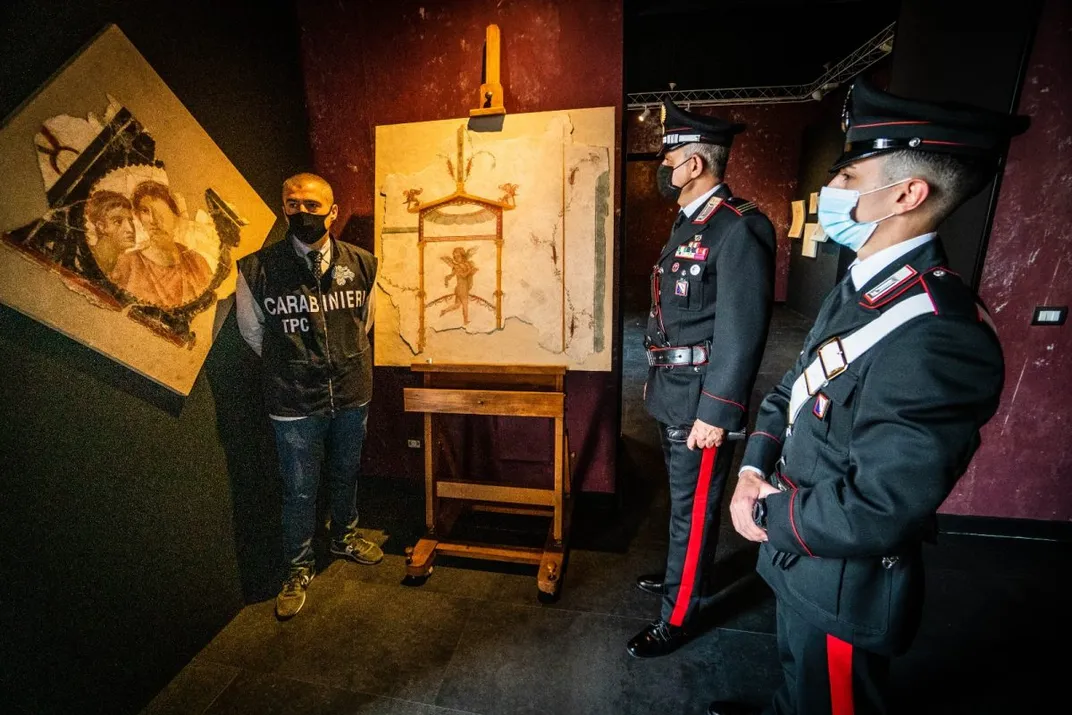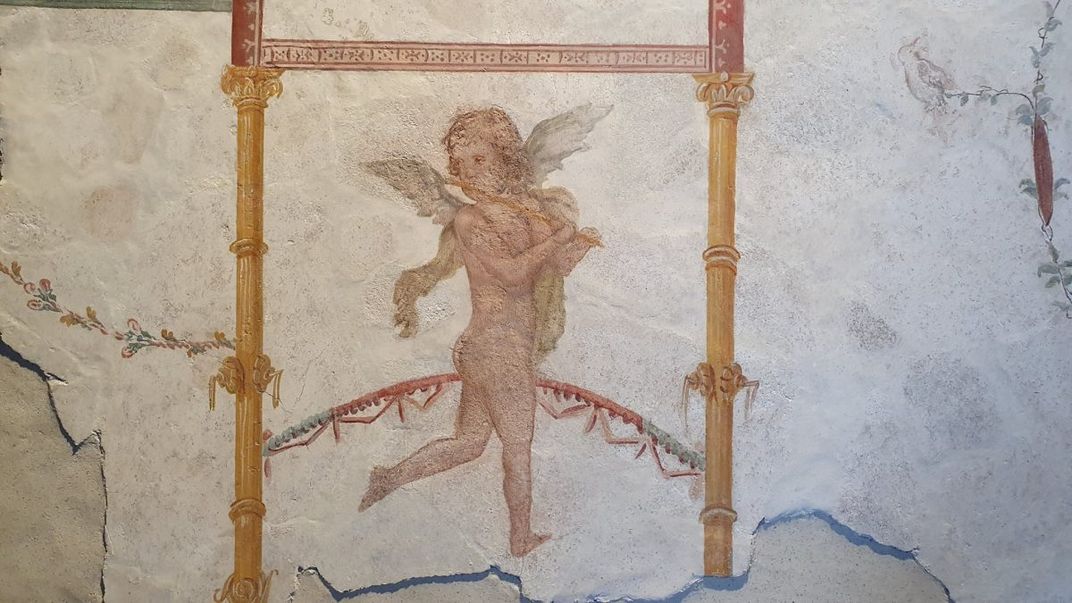Six Stolen Frescoes Returned to Pompeii
Between the 1970s and 2012, looters stole elegant artworks from two villas neighboring the famed ancient settlement
:focal(571x342:572x343)/https://tf-cmsv2-smithsonianmag-media.s3.amazonaws.com/filer/64/d5/64d55b70-fab9-4e17-a655-876d5df597f9/65f03db7-1d32-4126-b416-bb92c090aa75-1200x800.jpeg)
Italian law enforcement celebrated a reunion at the Pompeii Archaeological Park this week: namely, the return of six elegant ancient frescoes, all of which were pilfered from nearby towns in recent decades.
Per a statement, police recovered three of the frescoes in 2012, when they discovered a tunnel—obscured from view by sheets of metal, dirt and plants—leading to an illegal dig site in Civita Giuliana, a settlement about half a mile northwest of Pompeii. Like much of the surrounding region, the suburb was blasted with heat and volcanic ash and eerily preserved in the wake of Mount Vesuvius’ catastrophic explosion in 79 A.D.
The suspected thieves are currently undergoing a criminal trial. They had stripped the three fresco panels from a villa’s walls and were planning to export the works abroad.
As for the other three returned frescoes, police only recovered them recently, as part of a crackdown on illegal antiquities trading that began in July 2020.
Authorities believe that these decorative works were stolen in the 1970s from two Roman houses in Stabiae, an ancient town about 2.5 miles southwest of Pompeii, reports Agence France-Presse (AFP). The frescoes were sliced off the walls of the ancient villas; smuggled out of Italy; and trafficked to collectors in the United States, Switzerland and England in the 1990s.
As Angela Giuffrida reports for the Guardian, the artworks stolen in the 1970s date to the first century A.D. One depicts a female dancer carrying a tray, while another shows a woman with laurel leaves wrapped around her head in front of a black background, according to the statement. The third and largest fresco fragment bears the image of a naked cherub dancing in front of a double-pitched roof decorated with sculptures of griffins and greenery.
“Ancient works of great value are returning to their rightful place,” said General Roberto Riccardi, head of Italy’s cultural heritage protection squad, at a ceremony celebrating the frescoes’ return on Tuesday, per the Guardian.
After police quashed illegal archaeological work at Civita Giuliana in 2012, the Italian government commissioned its own excavations at the site—and made some remarkable discoveries in the process.
In 2017 and 2018, archaeologists unearthed the well-preserved remains of three horses, still saddled and harnessed, at the suburban villa. Last November, they announced the discovery of a pair who’d died side-by-side in Mount Vesuvius’ second explosion: a wealthy man in his 30s or 40s and an 18- to 25-year-old man, both frozen in the final throes of agony. The younger man was likely a manual laborer enslaved by his older companion. Most recently, in March, researchers at the site revealed a “miraculously” well-preserved ceremonial chariot covered in intricate carvings of nymphs, satyrs and cupids.
Other finds made at Civita Giuliana indicate that it once housed a wealthy estate with servant’s quarters, farmlands, warehouses for wine and oil, and rooms decorated with beautiful frescoes—such as the three fragments recently returned to Pompeii’s archaeological museum.
“The return of these fragments is significant for several reasons,” says the Italian ministry of culture’s general director of museums, Massimo Osanna, in the statement, per a translation by Artnet News. “Each find constitutes an important piece of the history and knowledge of a place and must always be protected and preserved.”
/https://tf-cmsv2-smithsonianmag-media.s3.amazonaws.com/accounts/headshot/nora.png)




/https://tf-cmsv2-smithsonianmag-media.s3.amazonaws.com/accounts/headshot/nora.png)